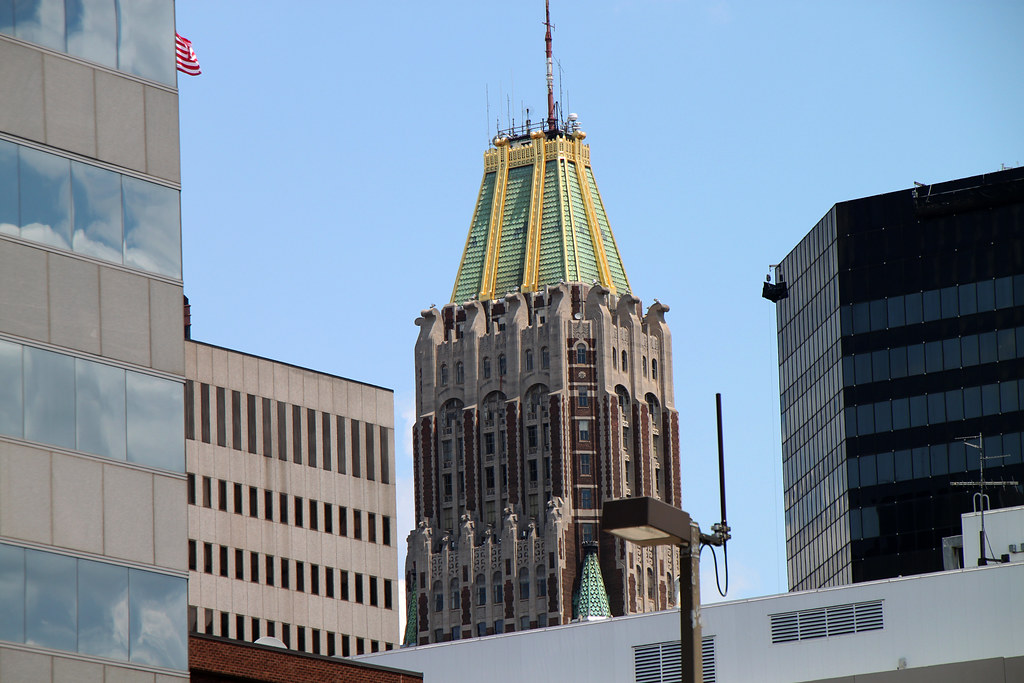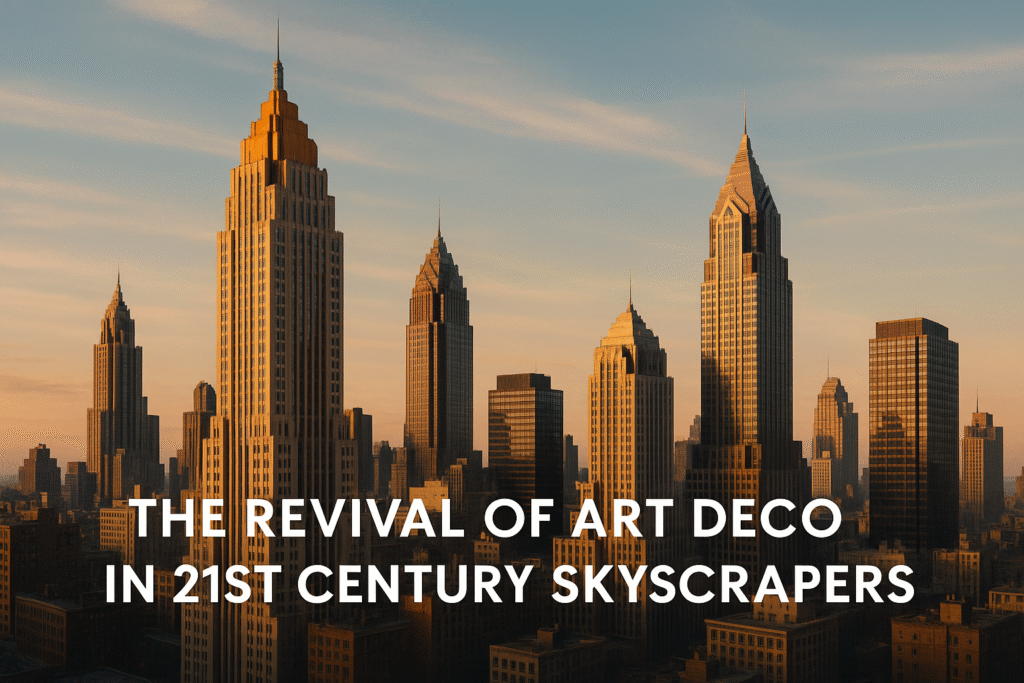In the heart of the world’s bustling metropolises, where glass and steel reach skyward in bold declarations of modernity, there lies a fascinating convergence of architectural epochs. This is a place where the intricate elegance of the past meets the dynamic innovation of the present. Among these towering giants, a revival is quietly taking place—a resurgence of Art Deco, a style once synonymous with the glamour and optimism of a bygone era. As cities continue to evolve, this iconic design language is finding new life in the 21st-century skyline, blending the nostalgia of the Roaring Twenties with contemporary sensibilities to create structures that are both timeless and visionary.
The Historical Allure of Art Deco
Art Deco emerged in the early 20th century, a movement that captured the zeitgeist of post-war exuberance and industrial progress. Characterized by geometric shapes, bold lines, and lavish ornamentation, Art Deco was a celebration of the future, embracing new materials and technologies. It was a style that was both forward-looking and deeply rooted in the opulence of its time, offering a glamorous departure from the ornate and intricate designs of the previous century.
In skyscrapers, Art Deco became a language of ambition. The Chrysler Building in New York, with its gleaming spire and sunburst motifs, epitomized the era’s fascination with speed, power, and luxury. As cities expanded, these architectural gems became symbols of progress, standing tall amid the ever-growing urban landscape. Today, the revival of Art Deco in skyscrapers is not just about nostalgia; it’s about reimagining these philosophies in a modern context, where the elegance of the past enhances the cutting edge of today’s architectural innovations.
The Resurgence of Art Deco in Modern Skyscrapers
In the 21st century, architects and designers are revisiting Art Deco not just for its aesthetic appeal but for its ability to convey a sense of identity and history within the urban fabric. This revival is evident in cities like New York, Miami, and Shanghai, where new skyscrapers are incorporating Art Deco elements to pay homage to the city’s architectural heritage while pushing the boundaries of modern design.
The resurgence is not limited to mere replication of past motifs. Instead, contemporary architects are infusing Art Deco’s principles with sustainable practices and innovative technologies. The result is a new breed of skyscrapers that respect the style’s rich history while embracing the needs of the present day. These buildings are not just tributes to the past; they are active participants in the dialogue of urban development, offering solutions that are as functional as they are beautiful.
The Global Influence of Art Deco
While the roots of Art Deco are often associated with Western cities, its influence has been truly global. In cities across Asia, Africa, and the Middle East, Art Deco has left an indelible mark on the urban landscape. Today, as these regions experience rapid urbanization, the style is being revived and adapted to suit different cultural contexts.
In Shanghai, for example, new skyscrapers are drawing on the city’s rich Art Deco heritage, integrating traditional Chinese aesthetics with the style’s characteristic symmetry and grandeur. This fusion creates a unique architectural language that is both globally inspired and locally grounded. As Art Deco continues to make its mark on the world stage, it serves as a reminder of the interconnectedness of cultures and the universal appeal of timeless design.
Innovative Materials and Techniques
One of the most exciting aspects of the Art Deco revival is the use of innovative materials and construction techniques that were unavailable to the original architects of the style. Modern skyscrapers are incorporating materials like glass, steel, and aluminum in ways that enhance the intricate detailing and geometric forms of Art Deco design.
Incorporating advanced technologies such as 3D printing and parametric design, architects are able to achieve levels of precision and complexity that were previously unimaginable. This technological prowess allows for the creation of structures that are both visually stunning and environmentally sustainable, embodying the spirit of progress that Art Deco originally championed.

Sustainability and Art Deco
The revival of Art Deco in contemporary skyscrapers is also closely linked to the growing emphasis on sustainability in architecture. Green building practices, energy-efficient technologies, and environmentally conscious design are becoming integral to new constructions, and Art Deco’s revival is no exception.
By integrating sustainable materials and practices, architects are ensuring that these new Art Deco skyscrapers are not only aesthetically pleasing but also environmentally responsible. This approach aligns with the original ethos of Art Deco, which was to embrace modernity and innovation. Today, this means creating buildings that harmonize with their surroundings and contribute positively to the urban ecosystem.
The Role of Art Deco in Urban Identity
Art Deco’s revival is playing a significant role in shaping the identity of modern cities. As urban centers grow and evolve, there is a desire to preserve a connection to the past while forging a path toward the future. Art Deco provides a bridge between these two aspirations, offering a design language that is both historical and forward-thinking.
Incorporating Art Deco elements into new skyscrapers allows cities to celebrate their unique heritage while also showcasing their commitment to innovation and progress. This balance is crucial in creating vibrant urban environments that honor their history while remaining relevant in a rapidly changing world.
Iconic Examples of Modern Art Deco Skyscrapers
Several contemporary skyscrapers stand as testaments to the successful revival of Art Deco. The Comcast Technology Center in Philadelphia, designed by Foster + Partners, is a perfect example of how Art Deco can be reimagined in a modern context. Its sleek lines and elegant detailing pay homage to the style’s past while embracing the future of technology and design.
Similarly, the Miami Beach skyline has seen a resurgence of Art Deco-inspired buildings that blend the area’s historic architecture with contemporary luxury. These structures serve as landmarks in their own right, highlighting the enduring appeal of Art Deco and its ability to adapt to modern needs and tastes.
Challenges and Opportunities in Art Deco Revival
While the revival of Art Deco presents exciting opportunities for architects and designers, it also poses certain challenges. Balancing the historical aspects of the style with modern requirements can be complex, requiring a deep understanding of both the past and present architectural trends.
However, this challenge also presents an opportunity to innovate and experiment. By pushing the boundaries of design, architects can create new interpretations of Art Deco that are relevant for the 21st century. This ongoing dialogue between history and modernity ensures that Art Deco remains a vibrant and dynamic force in the world of architecture.
Conclusion
The revival of Art Deco in 21st-century skyscrapers is a testament to the enduring appeal of this iconic style. By seamlessly blending the elegance of the past with the innovations of the present, architects are creating structures that are both timeless and forward-thinking. As cities continue to grow and evolve, the resurgence of Art Deco offers a unique opportunity to celebrate history while embracing the future, creating urban landscapes that are as rich and diverse as the cultures they represent.

Recent Posts
15 Floor Plan Graphic Styles That Will Elevate Your Presentation Game
The Role of Shadows in Architectural Storytelling
When Furniture Becomes Architecture: Blurring the Line